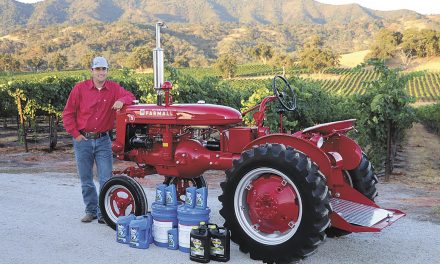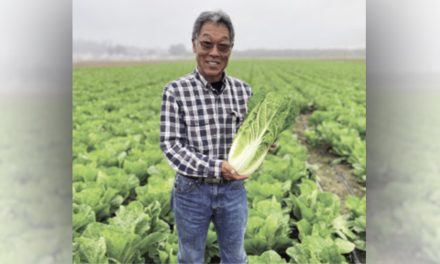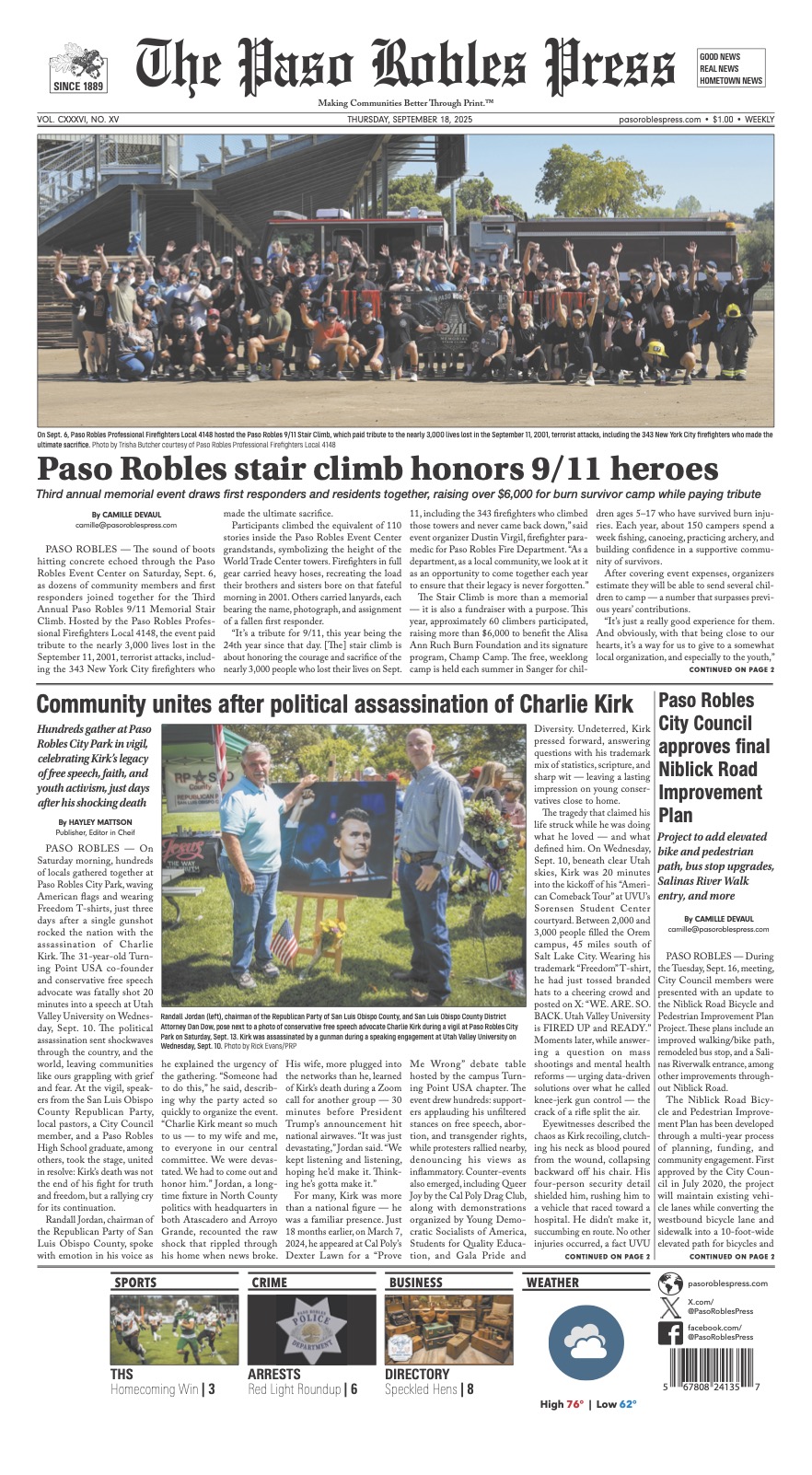California adopted USDA’s milk pricing and pooling system in 2018, becoming the 11th federal milk marketing order in the nation
By Ching Lee
California Farm Bureau Federation
CALIFORNIA — Nearly five years after joining the federal milk marketing order, California dairy farmers will have a chance later this month to weigh in on proposed changes to how milk should be priced, with potential impacts to their take-home pay.
The U.S. Department of Agriculture will hold a public hearing beginning Aug. 23 to consider 21 different proposals that seek changes to pricing provisions and formulas in the nation’s 11 milk marketing orders.
The hearing was called after USDA received an initial proposal from the National Milk Producers Federation, which contends the dairy marketplace has changed substantially since the federal milk pricing system saw its last comprehensive revision in 2000.
USDA also plans to hear proposals submitted by other groups, including the American Farm Bureau Federation, California Dairy Campaign and those representing processors.
Federal milk marketing orders, or FMMOs, regulate handlers that sell milk and dairy products by setting minimum prices that they must pay dairy farmers for raw milk and its components.
Pricing is based on four classifications of how milk is used: Class 1 represents fluid milk, including eggnog and buttermilk; Class 2 is soft products such as ice cream and yogurt; Class 3 is cheese and whey; and Class 4 is butter and milk powder.
Using market price trends for cheese, dry whey, nonfat dry milk and butter, USDA calculates minimum prices for each milk class based on the values of milk components such as butterfat, protein and solids. Under the FMMO system, fluid milk usually receives the highest minimum price.
California adopted USDA’s milk pricing and pooling system in 2018, becoming the 11th federal milk marketing order in the nation. Prior to that, the state operated its own milk-pricing system administered by the California Department of Food and Agriculture.
For the hearing, USDA has grouped the proposals into five subject areas: milk composition; surveyed commodity products; Class 3 and Class 4 formula factors; base Class 1 skim milk price; and Class 1 and Class 2 differentials.
The department rejected some proposals that it said do not affect prices, that do not fall within the scope of the hearing or for other reasons.
Though USDA has agreed to hear 21 proposals, there’s one that dairy farmers are “pretty much completely unified on,” said Geoffrey Vanden Heuvel, director of regulatory and economic affairs for Milk Producers Council. Producers would like the formula for pricing Class 1 fluid milk to be based on the higher of either the Class 3 cheese value or the Class 4 butter and nonfat dry milk value, he said.
Historically, the federal order had used the higher of those two values to set the base price for fluid milk, he said, but the formula changed in 2018 at the request of handlers. As a result, Class 1 is based on the average price of Class 3 and Class 4, plus 74 cents for every hundred pounds of milk. Producers went along with it, he said, because the modification was supposed to be “revenue neutral over time.”
The pricing system operated “without a whole lot of controversy until the pandemic,” when the price of Class 3 milk skyrocketed but Class 4 did not, Vanden Heuvel said. Using the “average of” Class 3 and Class 4 values, fluid milk prices did not move up in tandem with Class 3, and dairy farmers missed out on an estimated $1 billion of revenue, Vanden Heuvel added.
In its proposal, the International Dairy Foods Association, which represents dairy product manufacturers, said processors and dairy farmers agreed to the “average of” change because it “substantially enhanced” their ability to accurately predict Class 1 prices and made it possible for them to engage in forward-price hedging on Class 1 milk or products.
The group has proposed retaining the “average of” formula but with changes to the adjuster on a schedule. IDFA said its proposal would “put more dollars into dairy farmer pockets” than either the current formula or the National Milk Producers Federation’s proposal while preserving their ability to hedge.
Lynne McBride, executive director of California Dairy Campaign, said her group has been pushing for a return to the “higher of” formula since 2020 but would like to see the change done legislatively. She noted it was Congress that made the change in 2018 as part of the farm bill.
For this reason, she said her organization was not in favor of holding a hearing to fix the issue, as it would “open up the can of worms” on other proposals that could further hurt producer income.
Specifically, her group opposes proposals that call for increasing the make allowance, which is what dairy farmers pay processing plants to convert milk into finished dairy products such as cheese and butter.
In its proposal, the National Milk Producers Federation, which represents dairy farmer cooperatives, supports a 20 percent increase in the make allowance. The International Dairy Foods Association has asked for a phased-in 60 percent increase.
McBride said dairy farmers, who currently face “incredible losses” due to plummeting milk prices and soaring production costs, should not have to “carve out” more of their milk checks to pay for manufacturing costs.
If the cost to make dairy products has increased, she said, processors should pass those costs “further up the food chain, not downward toward dairy farmers,” who are unable to pass on their increased costs.
With a lack of a dairy growth management plan, McBride said another concern with increasing the make allowance is that it would allow processing plants to continue taking more milk even when there’s a supply-and-demand imbalance.
“That’s going to lead to chronically depressed milk prices because … you’ll have too much product out there,” she said.
What’s more, she said processor surveys used to estimate how much manufacturing costs have gone up remain voluntary and are not audited, so they’re unreliable.
Even so, Vanden Heuvel said there’s not much argument that the cost to make cheese and nonfat dry milk has increased since 2008, the last time the make allowance was adjusted.
He said producers should “look at the big picture,” as he thinks there’s enough potential revenue in Class 1 and 2 milk prices to help offset some of the costs associated with make allowance changes.
He said it’s also important for the long-term viability of the federal order program to make periodic updates to the pricing formulas. Not doing so would risk eroding processor participation in the program, he added.
With the hearing going forward, McBride said her organization has submitted its own proposal: to add mozzarella to the protein price formula. Currently, the Class 3 price is based on the Chicago Mercantile Exchange cheddar block and barrel price, which she described as “incredibly volatile.”
Because U.S. production of mozzarella cheese has surpassed cheddar, she said the milk pricing formula should reflect the value of mozzarella.
After the hearing, USDA will publish a final decision on changes to the FMMO, which dairy farmers may approve or reject in a referendum.
In the trade association’s news column, NMPF President and CEO Jim Mulhern said he expects the hearing process will take six to eight weeks, with a producer vote sometime next year.
“This has been a long process, but one that’s critical to dairy’s future,” Mulhern said.
The stakes are “very large,” Vanden Heuvel said, as a “no” vote would end the FMMO and lead to deregulation. McBride said this is a “big concern,” as California producers “fought so hard” to join the federal order, and “we don’t want to lose the whole thing.”
“This increases the seriousness of what is contemplated,” Vanden Heuvel said, though he added he thinks dairy farmers will “very likely” vote “yes,” unless USDA proposes a plan that “producers just can’t live with.”
The hearing will convene at 9 a.m. EDT, Aug. 23, at the 502 East Event Centre, 502 East Carmel Dr., Carmel, Indiana.
Dairy farmers may testify in person any time during the hearing or virtually on Fridays. There will be 10 slots for virtual testimony each Friday at noon EDT starting Sept. 1 until the hearing concludes.
To testify virtually, dairy farmers must preregister for a time slot, to be available starting Monday of the same week at ams.usda.gov/rules-regulations/moa/dairy/hearings/national-fmmo-pricing-hearing.














